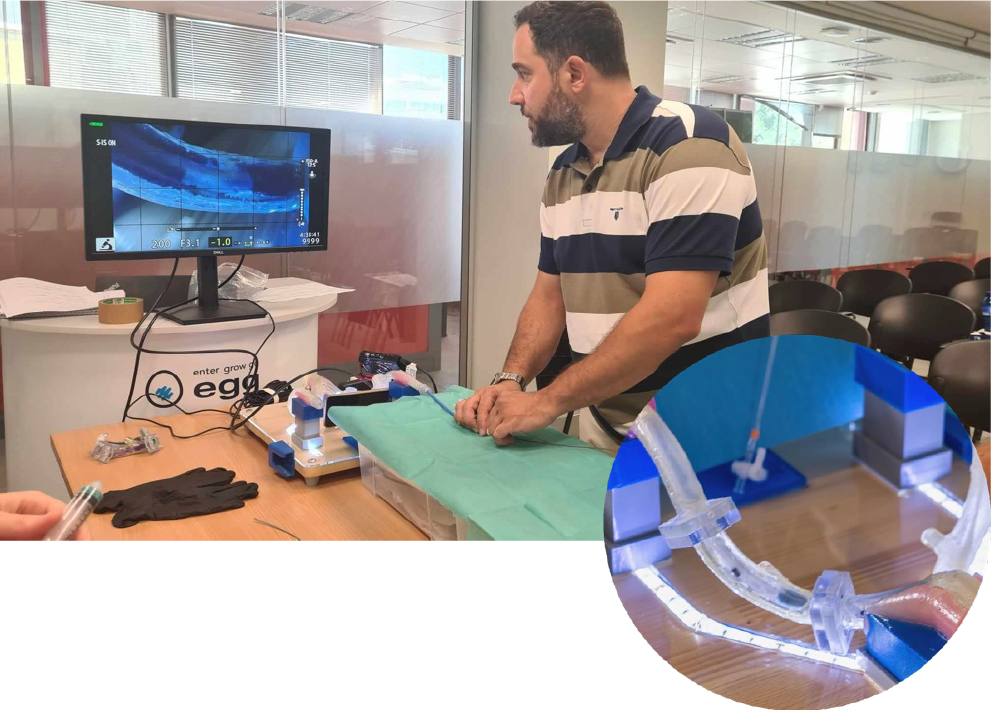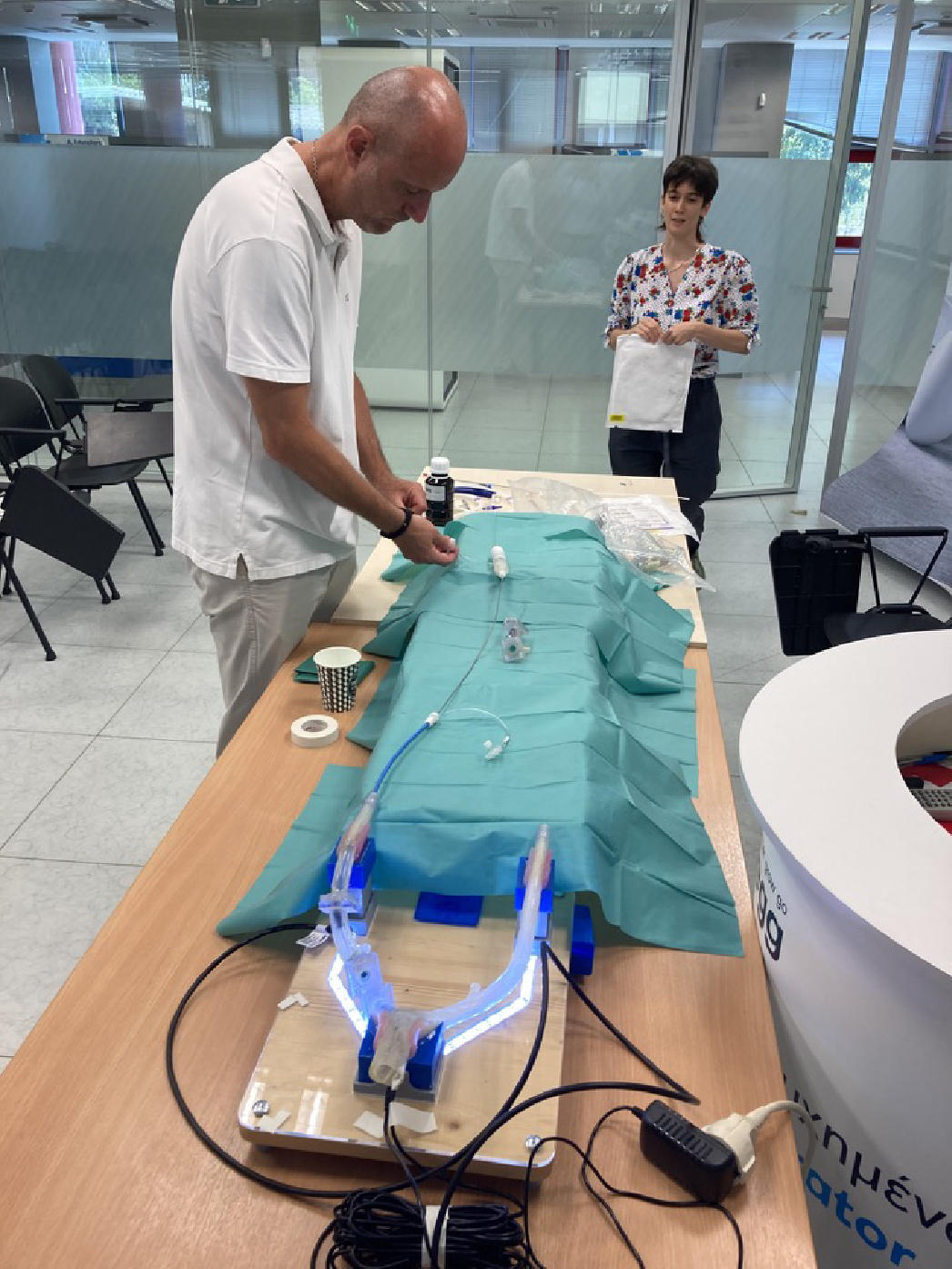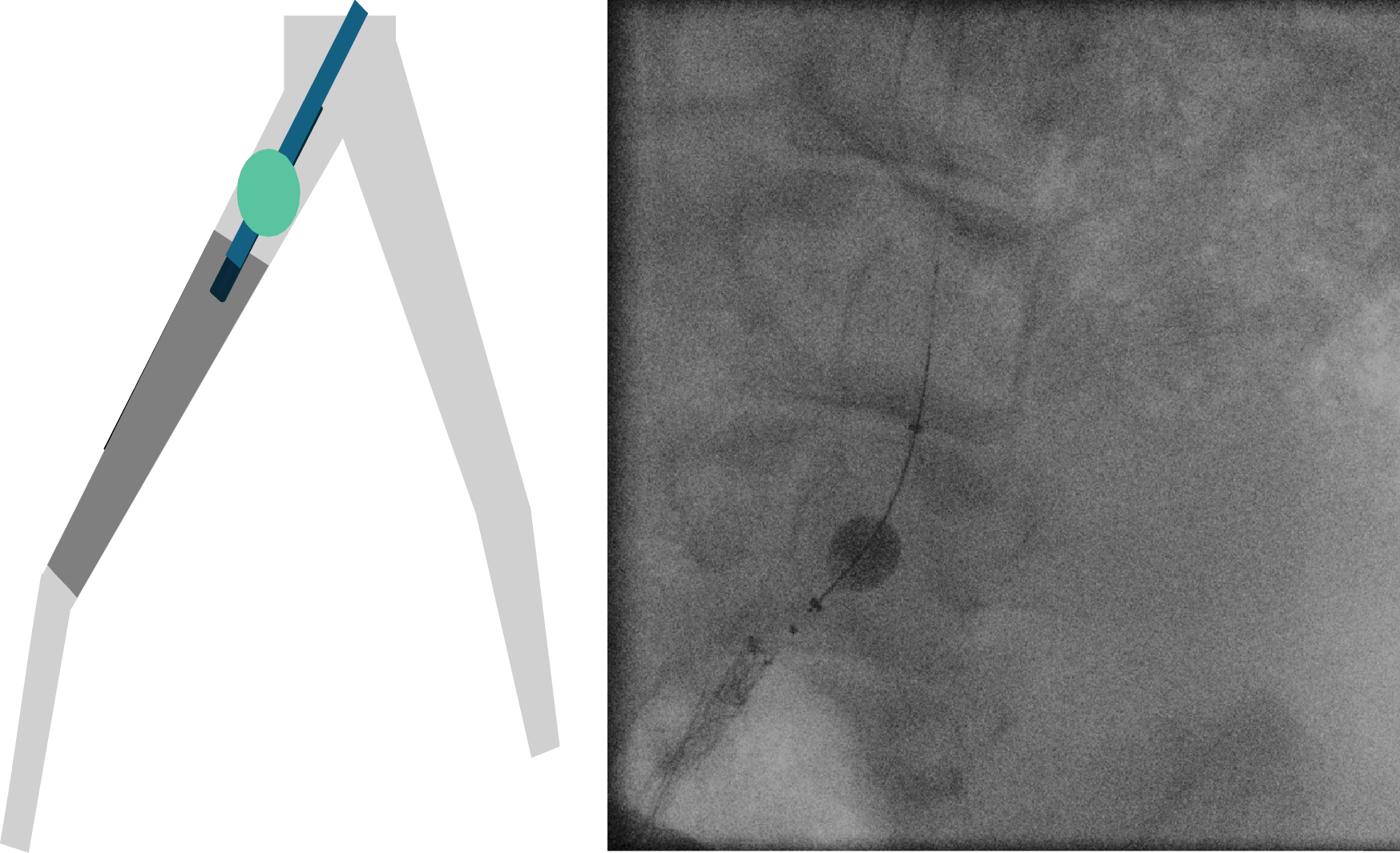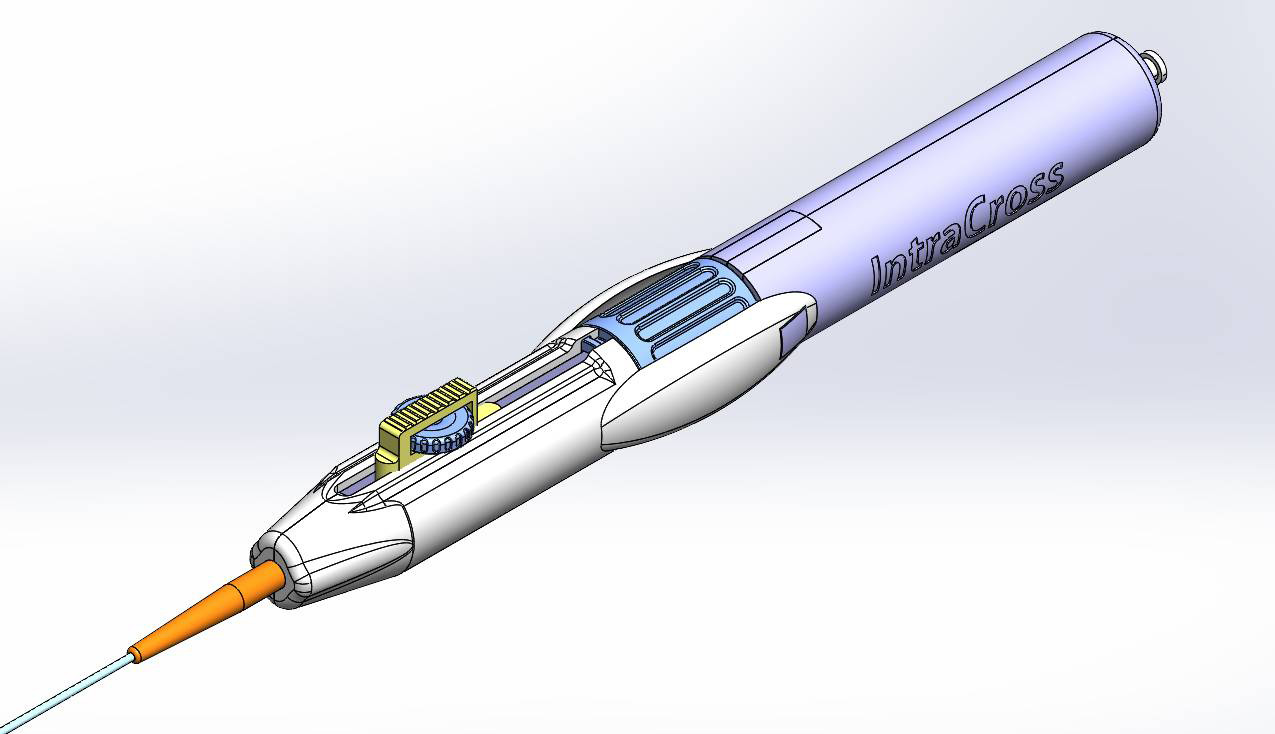Scientific Evidence
1. Proof-of concept in vitro study
Our TRL6 prototype was tested by four vascular surgeons, highly skilled with great experience, in comparison
with existing support catheters during the crossing of a CTO.
• 4 vascular surgeons attempted a standard retrograde technique for crossing CTOs, using a 4Fr Seeker (BD) and a 6Fr Intracross Catheter.
• An 0.018 Asahi Gladius guidewire was used for all crossings, and the environment was a soft, 3D printed silicon model of the aortoiliac system.
• For the simulated CTO, two hardness grades were used, made of plasticine and plaster.
• One attempt was performed per catheter and hardness grade. Time was recorded with a stopwatch for each crossing, and all crossings were recorded on a camera. An attempt was considered failed after 10 min.

2. In vitro centreline crossing confirmatory study
• A straight transparent PVC tube diameter with a 6mm was used as a model. The simulated occlusion had a length of 5-8mm and was made of plasticine and plaster (ratio 1:3). The stroke of the current prototypes inner shaft varied from 5-10 mm.
• Balloon centering was documented with pictures by placing the camera lens vertically to the section of the vessel wall and the occlusion and measuring the distance of the inner shaft tip from the center of the vessel (figure 2).
• Successful crossing definition: the exit of the inner shaft at the area of the circle with a radius =50% of the vessel inner radius (<1.5mm from the center).
• The “eleif.net/photomeasure” software was used to measure the distance on each photo taken.

3. In vivo animal model study
Acute in vivo study
• Occlusions were created in iliofemoral arteries (long resistant total occlusions in large vessels were simulated using the iliofemoral arteries in the porcine model) and a 0.018'' wire was used to attempt and pass through the occlusion.
• A catheter already available in the market (control) and the IntraCross Catheter (a prototype) were used to evaluate crossing success rate and ability to centerline.
• The creation of a chronic model was aborted after failures in all 6 animals attempted. Results refer to the single acute model implemented instead*.
*CTO simulation technique: Smaller side branches are occluded with metal coils. The main vessels are damaged with balloon overstretch, with a balloon artery ratio of up to 1.6. An undersized partially deployed stent is at the distal end of the vessel segment. A layered thrombus is created with treated blood, calcium granules, thrombin and metallic fibers and is deposited along the damaged vessel segment to create a complete occlusion.

Proven effectiveness
The results of the studies clearly demonstrate the effectiveness of the device.
The IntraCross Catheter consistently succeeded, whereas traditional catheters failed
The IntraCross Catheter was able to cross CTOs rapidly and safely.
The results highlight the catheter's ability to tackle the toughest CTOs



